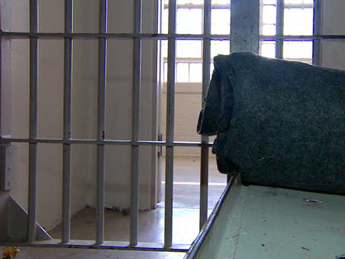
NEW YORK (Digital.FinalCall.com) – Poppy, 34, Shamaine, 29, and Jermaine, 32, have one thing in common: All three have felony arrests on their records and all three have served time in New York state prisons.
“Ain’t no work out here for brothers like me–all people are talking about is preparation–but I have a family to feed,” Poppy, who like the others wanted to be referred to by first names and nicknames, told The Final Call. “When you have a felony they put you in a box that’s why a lot of brothers go to the street to get paper,” added the father, talking about money or income to survive.
Two of three men interviewed served three and a half years for felony assault.
Shamaine admitted to having three felony arrests under his belt, with five years to go on parole. “If you are determined to get a job no matter how many felonies you have, you can get one,” he said emphatically. He plans on becoming a carpenter’s apprentice.
“Everybody with a felony isn’t a felon,” insists Jermaine, who admitted to having four felonies in his past.
All of the young men stood in a variety store located on Jersey St. in the New Brighton neighborhood where unemployment is high. They gave a collective, “Yeah that’s right” when Jermaine said: “People sell drugs because nobody is giving out jobs. I sold drugs because I have four children to feed.”
All three also said the re-entry system isn’t working.
Prison time remains a serious barrier to employment, making ex-offenders difficult to place and to be able to sustain full-time employment.
While the Washington-based Sentencing Project and the New York-based Vera Institute of Justice support a Jan. 27 report from the Washington-based Urban Justice report highlighting successes of the six-year-old federally funded Justice Reinvestment Initiative, others aren’t convinced. The program is supposed to provide help for prisoners coming out of state prisons and local jails.
The initiative is designed to identify and implement “cost-efficient,” evidence-based criminal justice reforms, using methods from 17 states that are supposed to save taxpayers $3.3 billion over the next 10 years.
Promises are fine but the money isn’t getting to communities of color that are disproportionately affected by the large numbers of people in state and local jails, said some analysts.
Minister Greg Lewis of Pastors United in Milwaukee complained that grassroots activists in Milwaukee are not getting resources or information. “Reentry is huge here in Milwaukee, most of the Black male population has had some type of contact with prison,” he said. “The young men congregate in our neighborhoods, drinking and selling drugs, seemingly unable to find work; unemployment is nearly 60 percent. I am getting calls daily about this.”
“We need to mobilize everyone and direct their attention to how to solve this problem,” he said. Pastors United in Milwaukee, a church coalition, was formed to focus attention on issues important to the Black community. Some of the churches provide limited direct services to former inmates. There is no clear discussion about what money is available to pay for reentry programs, said Min. Lewis. The big think tanks are getting funds but the money isn’t coming down to people dealing with the problems, he added.
In Milwaukee, Wisconsin, some 20,500 prisoners were released back into the community between 2007 and 2012, without needed resources, according to John Pawasarat, director of the University of Wisconsin-Milwaukee Employment and Training Institute. After studying reentry issue for the past 15 years, the conclusion has to be that in Milwaukee ex-offenders are a population that people don’t care about, Mr. Pawasarat told The Final Call. “I should say that the only organizations that show they care are the churches,” he added. It is so bad here in Milwaukee that human resource people at employment agencies are telling us not to refer ex-offenders for job opportunities, Mr. Pawasarat noted.
“We have to have a lot more discussion on how to move the needed resources into the reentry efforts on the ground. We know the reality is a far distance from that,” said Ann L. Jacobs, director of the Prisoner Reentry Institute at John Jay College of Criminal Justice in New York.
The Sentencing Project issued a report Jan. 24 saying one in three states closed prisons between 2011 and 2013, with saving an estimated $97 million. Sentencing Project researchers said sentencing and parole reforms and comprehensive juvenile justice measures that emphasize prevention resulted in the savings.
The Urban Institute released a report Jan. 27 predicting that at the current pace $4.6 billion could be saved in coming years as state prison populations are reduced. Some analysts noted federal support for the Justice Investment Initiative had been a meager $6 million annually, until President Obama convinced Congress to appropriate $28 million for the current fiscal year.
A mere three hours after The Final Call conducted interviews, Poppy called The Final Call to say Shamaine was involved in a shootout with another young Black man across the street from where interviews were conducted.
“Without the proper resources the collateral consequences will be astronomical,” said Ms. Jacobs.












